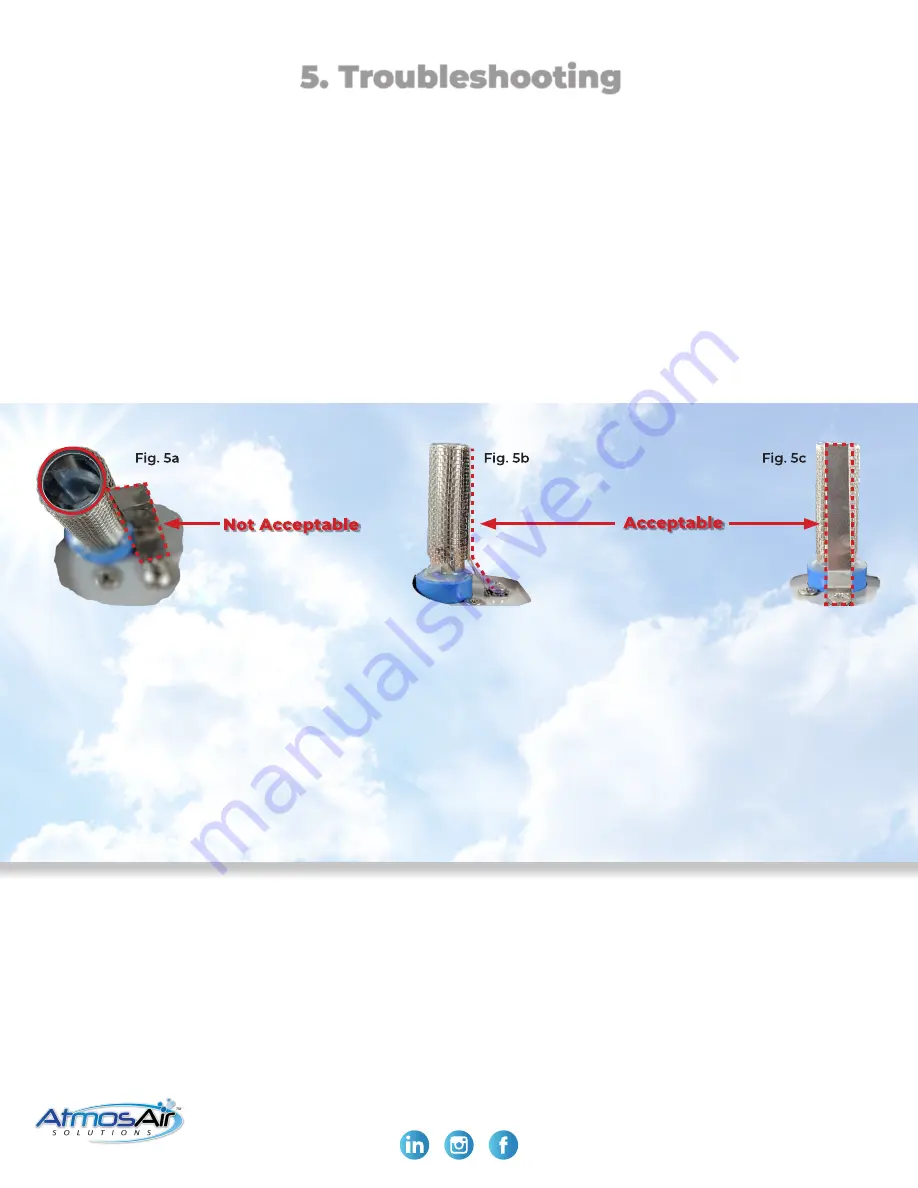
Page 8
Installation, Operation & Maintenance Guide - FC-400 FM
East Coast: 203-335-3700
West Coast: 480-629-4784
CAG-04-19-001-USA
www.AtmosAir.com
5. Troubleshooting
In the event that the system is not functioning, follow these steps
IN ORDER
:
1.
Check the fuse. If it is blown, replace it with the appropriate sized slow-blow 1A glass 5mm x 20 mm
fuse rated at 250 V and continue to the next step.
2.
Check that the main power supply is sending the correct power to the unit (~12VAC = White wire +).
3.
If the system is controlled by an air pressure switch, and/or a door switch, check that these are not
preventing power from being sent to the system.
4.
If power is reaching the unit and it was necessary to replace the fuse, the next step is to determine
whether there is a fault in the system or a tube. First, to check that the system’s power is functioning,
set the ionization power knob to ‘high’ position, turning the knob all the way clockwise. Make sure all
personnel are clear of the high voltage tube, then re-connect the power supply. Turn on the power
to the unit and observe the blue light. If the light does not turn on, there is a power delivery problem.
If all external sources of failure are eliminated, the system should be serviced by a qualified AtmosAir
technician. Please see contact information at the bottom of this page.
5.
Check that the spring tang is making
CLEAN
,
FLAT-TO-TUBE
contact with the tube as shown below:
The next step is to determine the cause of the failure, or blown fuse. Typically, failures are caused by
arcing between the inner and outer electrodes, or between one electrode and ground. Often, this
occurs either because the tube isn’t properly seated, or because of damaged tubes or dirty and/or
wet conditions that have allowed carbon tracking to temporarily connect two electrodes and/or a
grounding point electrically.
6.
Inspect the enclosure and tube cap for tracking evidence.
7.
Inspect the tube for cracks, pitting, or other degeneration of the dielectric material that causes the
dielectric to fail and arcing to occur.
8.
If physical inspection has not revealed the cause of failure, one may carefully observe the tubes as
the ionization system is turned on to determine whether arcing is occurring at a particular tube. The
fuse will usually blow, again, but for a short time, one may observe the cause of the power surge in
the form of a visual or audio cue. Usually a failing tube can be determined in a darkened room by
looking for a flash or arc from the failing tube.
9.
If the fuse blows, then the system should be serviced by a qualified AtmosAir Technician. You can
contact repair services at [email protected] or by calling our east coast office (number below).
10.
If the fuse continuously blows, then the system should be serviced by a qualified AtmosAir
technician.
11.
Otherwise, replace the damaged tube(s), clean and smooth any mounting plate or end cap carbon
tracking, and return the system to service.



























